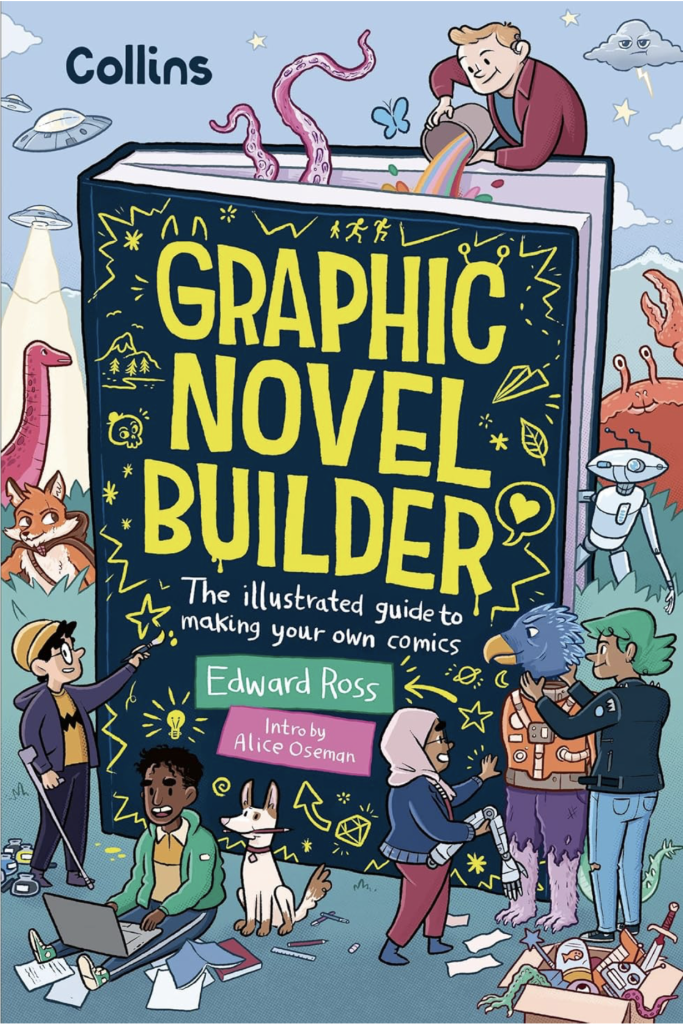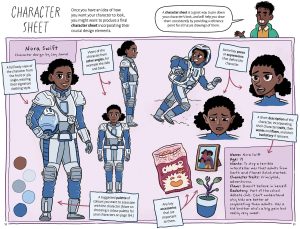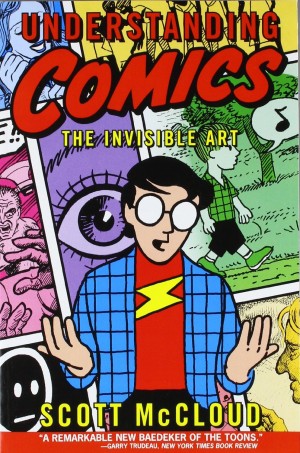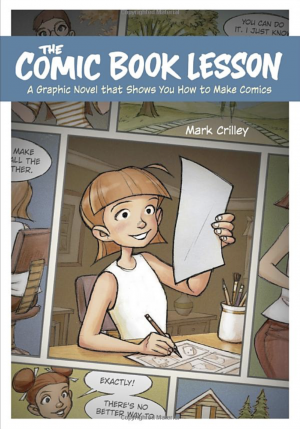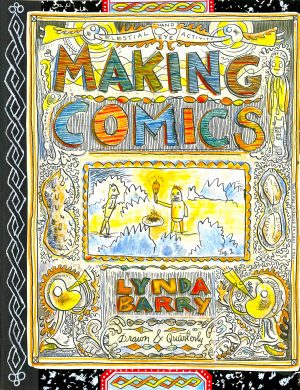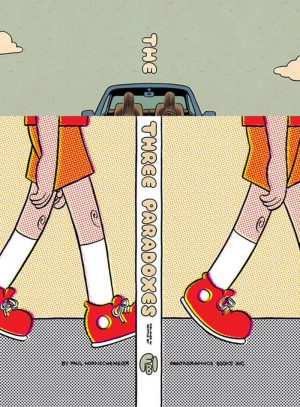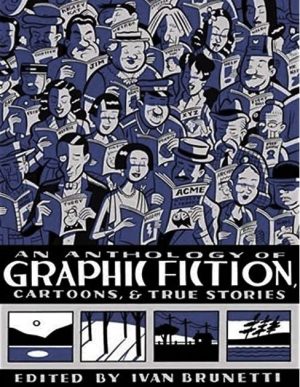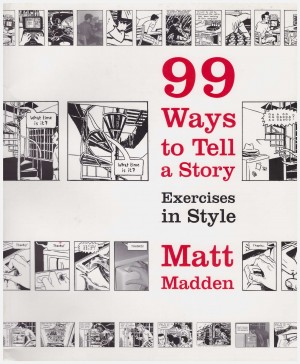Review by Graham Johnstone
Graphic Novel Builder, with a clarity maintained throughout, does exactly what it says. It’s also in the form of a graphic novel.
Edward Ross’s previous graphic novels explored the worlds of film and games, each of which involve common elements of characters, stories, settings, etc. So making a book about comics seems a sensible, even inevitable, next step. The earlier books are fascinating explorations of their respective art forms, but this is his first practical guide. It makes sense: he presumably only appreciates films and games, but actually makes comics. Much of the material here, though, could equally apply to those other media.
A series of easily digestible sections lead us through the making of comics from generating ideas, through the various stages of writing and drawing, to publishing and marketing the results. Ross is impressively thorough, with everything from ‘big picture’ exercises to generate ideas, to technical details like creating margins and bleeds on your pages, (yes, on either paper or computer). He covers everything from “ums and ahs” in dialogue, to formats for DIY comics, and from character silhouettes, to social media.
It’s accessibly written with appealing cartooning. The publishers bill it as age 9+, but Ross, (perhaps with help from their children’s book team), makes it accessible without being patronising. Some adult readers may be more attracted to the relative gravitas of, say, Scott McCloud’s Making Comics. However, almost anything any child, teen, young or old adult needs to know about making graphic novels is right here. Read straight through, it’s admirably concise and fascinating, but it would be most useful as a practical guide, referred to while working through each stage.
Collecting and collating existing information would be an achievement in itself, but Ross adds so much more. He has an infectious enthusiasm for the subject, combined with a supportive, gently motivational, approach. He avoids dogma, instead presenting options, and encouraging budding creators to ‘build’ their own approach. He also weaves his own creativity and comic-making skills through the book, helpfully illustrating ideas in action. Scott McCloud inserted his avatar as narrator/presenter of his books, but Ross goes further, creating a group of fictional wannabe creators. These classmates exemplify a diverse cast with distinctive looks and personalities, as well as complementary approaches and interests. Each also offers their own story ideas that are revisited at different stages.
Ross adapts his art style for the younger target audience. It’s simpler, cuter, and digitally smoothed. In the opening pages, the child-friendliness might deter adults. However, over the book his art becomes richer, as he both finesses the style, and overlays each new challenge, like characters in motion, colour palettes, and fleshing out figures in the pencil stage.
On the downside, he spends much of his modest page count on the pre and post production stages, possibly at the expense of the creation stages. The tips on pencilling involve overall composition that (following his own rationale) might be better considered at the ‘thumbnail’ stage. However, these are minor and debatable criticisms, and shouldn’t deter anyone.
Graphic Novel Builder deserves a place in any school library. Any child could use this to make a comic or graphic novel. It also deserves a wider audience, and even seasoned creators should find fresh ideas and angles.
